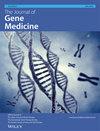Genome-Wide Study of Diabetes Mellitus (Type 2)–Associated Genes in Homo sapiens (Human)
Abstract
Background
Type 2 diabetes mellitus (T2DM) is a metabolic disorder characterized by insulin resistance and impaired secretion, necessitating the identification of new markers to target its development and complications.
Methods
This study conducted a genome-wide study on diabetes mellitus (type 2)-associated genes in Homo sapiens to better understand their role and explore their potential mechanisms. Twenty genes linked to type 2 diabetes were found in this study, and the various analyses, including chromosome localization, synteny analysis, physiochemical features, phylogenetic analysis, motif analysis, protein–protein interactions, gene structure, and expression profiles, were examined using a variety of bioinformatics tools.
Results
The findings revealed that the FOS gene was highly acidic with an isoelectric point (pI = 4.77); however, the VEGFA gene was greatly basic with an isoelectric point (pI = 9.24) as compared to the chosen genes in H. sapiens. A chromosomal localization analysis showed that diabetes-associated genes were randomly positioned on human chromosomes, with four genes (ELMO1, GCK, GNAI, and CYP3A4) on Chr7, while seven individual genes included PPM1K, TDO2, GALNT7, PIK3R1, VEGFA, PTGS1, TCF7L2, GNG3, SIRT4, and SSTR2 on chromosome numbers 5, 6, 9, 10, 11, 12, and 17, respectively. There were no tandem duplication events detected. Thirteen taxa (consisting of 26 genes) were identified by a phylogenetic tree, and seven taxa revealed orthologous conservation. Motif analysis showed the top 5 motifs were expected with identical frequency except motif 1 and motif 2. Strong interactions were seen between the ELMO1 gene and all predictive partners bearing a higher bitscore value of 1439.5 than other genes indicated by protein–protein interaction. Regarding gene structure analysis, the CHL1 gene showed a maximum number of 26 exons as compared with other genes in its structure. The highest expression level was exhibited by the CYP3A4 gene in the liver and pancreas as compared with other genes.
Conclusions
The present study provides insight into diabetes mellitus (type 2)–associated genes and can serve as a basis for their functional analysis.


 求助内容:
求助内容: 应助结果提醒方式:
应助结果提醒方式:


